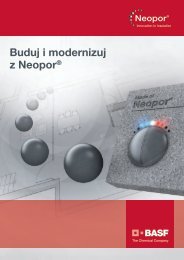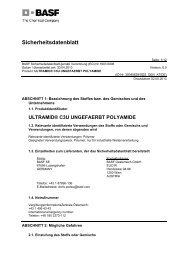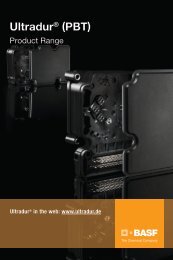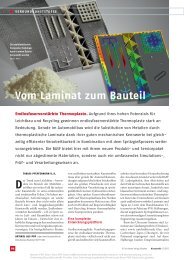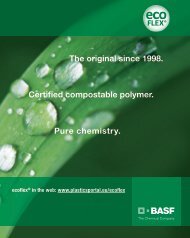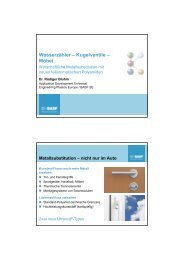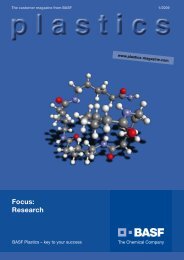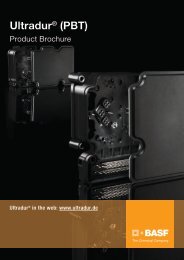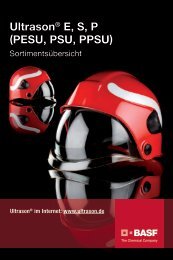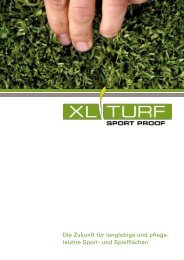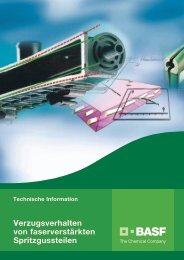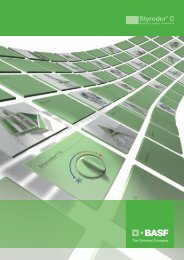plastics - The customer magazine from BASF 2/2007
plastics - The customer magazine from BASF 2/2007
plastics - The customer magazine from BASF 2/2007
You also want an ePaper? Increase the reach of your titles
YUMPU automatically turns print PDFs into web optimized ePapers that Google loves.
Markets and products<br />
electronics: its <strong>customer</strong>, Paul Reed<br />
Smith – CEO of PRS Guitars – had been<br />
looking far and wide for a new material<br />
for the bridge, which is where the strings<br />
are located. <strong>The</strong> envisaged material had<br />
to be hard, in any case harder than the<br />
commonly employed brass. It had to be<br />
easy and inexpensive to make. And last<br />
but not least, it had to impart a special<br />
sound to the guitar. “Of course, sound is<br />
not exactly one of the material properties<br />
that we have specified for our products,”<br />
explains Thom. “But preliminary testing<br />
already showed that the sound was absolutely<br />
pure. <strong>The</strong> <strong>customer</strong> was enthusiastic<br />
– and we were in business!”<br />
Material with<br />
a special sound<br />
And so a new electric guitar made by PRS<br />
Guitars was launched onto the market:<br />
the Hollowbody I sporting a bridge made<br />
of Catamold. This <strong>BASF</strong> product has a<br />
decisive advantage since its hardness, its<br />
acoustics and its low-cost production allow<br />
the integration of so-called piezoelectric<br />
pickups. As a result, the tone can be picked<br />
up by the individual strings directly at the<br />
bridge, and this enhances the acoustics of<br />
the instrument. This is a system that PRS<br />
Guitars has now patented. And who knows,<br />
when Latin rock musician Carlos Santana<br />
plays a fantastic virtuoso solo on his guitar<br />
at his next concert, this might even be in<br />
small measure thanks to products that<br />
came <strong>from</strong> Ludwigshafen …<br />
Further information:<br />
www.<strong>plastics</strong>portal.eu/ultraform<br />
www.catamold.com<br />
Background<br />
Powder injection molding with<br />
Ultraform<br />
Catamold ® consists of granules of<br />
metal powder and a binder system<br />
with the plastic Ultraform ® (polyoxymethylene)<br />
as the main component.<br />
<strong>The</strong> plastic ensures that the metal<br />
powder remains pliable and retains its<br />
shape. In this manner, it can then be<br />
easily processed by powder injection<br />
molding into complex components in<br />
large quantities. Afterwards, a catalyst<br />
is employed to remove the Ultraform,<br />
leaving a residue of just a few percent.<br />
<strong>The</strong> metal skeleton that is left behind<br />
is then sintered at about 1300°C<br />
[2372°F]. This gives it the quality of a<br />
forged component but it is simpler and<br />
less expensive to produce. Some of the<br />
uses of Catamold include auto parts,<br />
consumer goods such as watches and<br />
jewelry or electronic equipment.<br />
21



